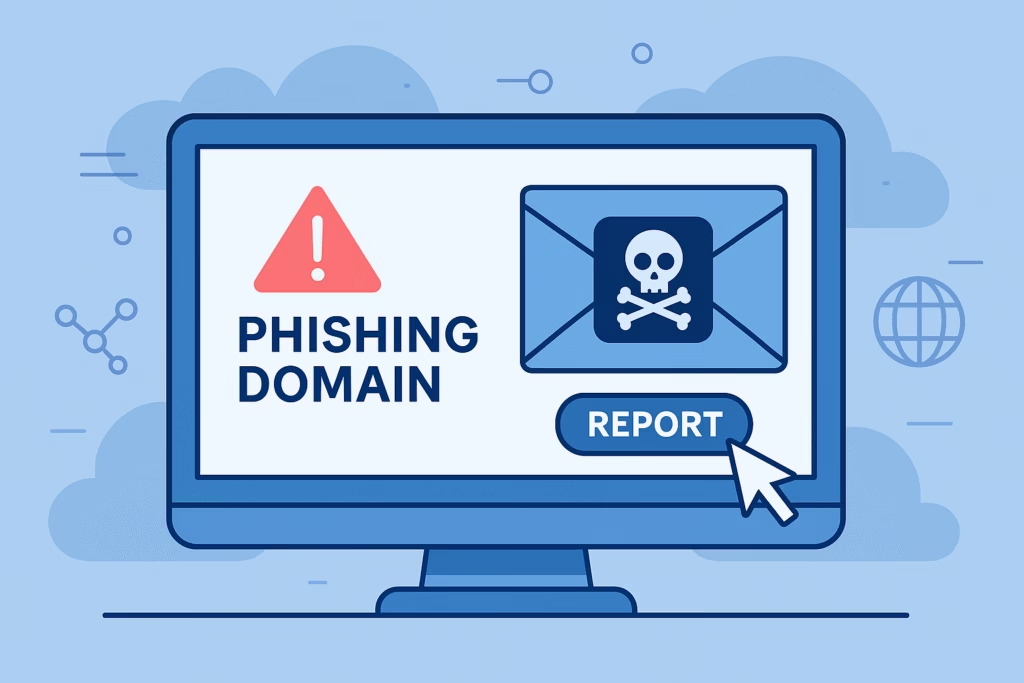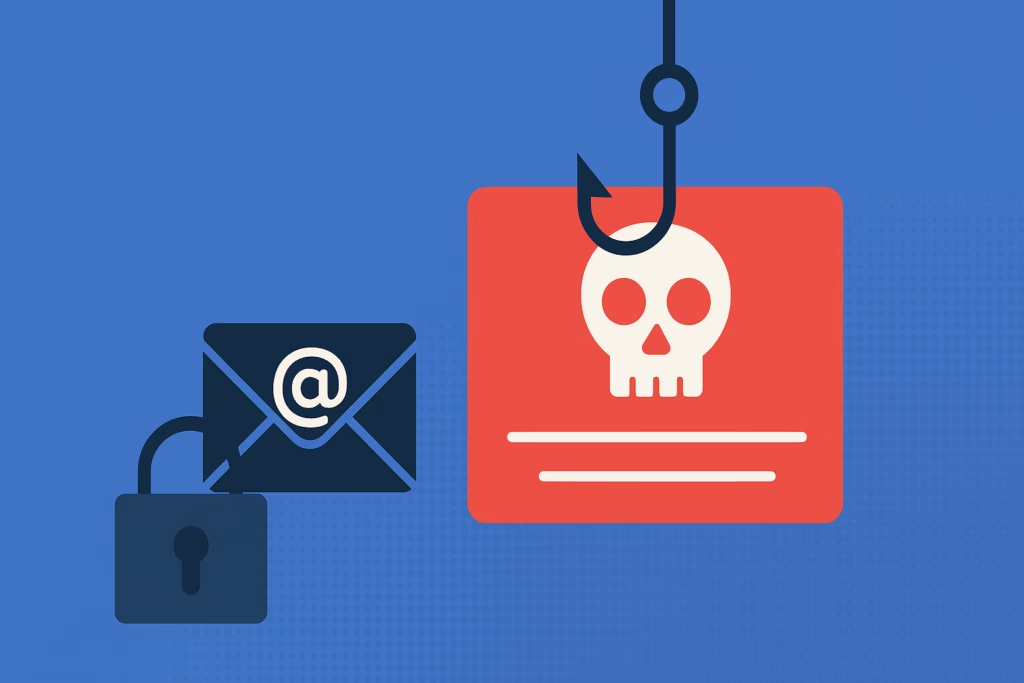
Phishing domains represent one of the most significant cybersecurity threats facing individuals and organizations today. When cybercriminals create fraudulent websites that mimic legitimate businesses, banks, or services, they’re essentially setting traps to steal sensitive information like passwords, credit card numbers, and personal data. If you’ve encountered a suspicious website or received a phishing email, knowing how to properly report phishing domains is crucial for protecting yourself and others from these digital predators.
According to the FBI’s Internet Crime Report, phishing attacks increased by 70% in 2022 alone, with victims losing over $10.3 billion to cybercriminals. Every phishing domain you report helps law enforcement agencies and cybersecurity organizations build a stronger defense against these threats.
Understanding Phishing Domains and Their Impact
Before diving into the reporting process, it’s essential to understand what constitutes a phishing domain. These malicious websites typically exhibit several warning signs:
- URLs that closely resemble legitimate websites but contain subtle misspellings or variations
- Unsecured connections (missing HTTPS encryption)
- Requests for sensitive information through suspicious forms
- Poor website design or grammar errors
- Urgent language designed to pressure immediate action
Domain phishing attacks have evolved significantly, with cybercriminals now using sophisticated techniques like internationalized domain names (IDNs) and homograph attacks to create nearly identical-looking URLs. These advanced phishing domains can fool even tech-savvy users, making reporting mechanisms more critical than ever.
Primary Channels for Reporting Phishing Domains
Federal Trade Commission (FTC)
The Federal Trade Commission serves as the primary consumer protection agency in the United States. To report phishing domains to the FTC:
- Visit the FTC’s official complaint assistant website
- Select “Identity Theft and Online Security” as your complaint category
- Choose “Phishing” from the subcategory options
- Provide detailed information about the phishing domain, including the exact URL
- Include any relevant screenshots or email communications
- Submit your complete contact information for follow-up purposes
Internet Crime Complaint Center (IC3)
The FBI’s Internet Crime Complaint Center specializes in cybercrime reporting and investigation. When reporting phishing domains to IC3:
- Document the complete URL of the suspicious domain
- Preserve all related emails or communications
- Note the date and time of your encounter with the phishing site
- Provide information about any financial losses or attempted fraud
- Include details about how you discovered the phishing domain
Anti-Phishing Working Group (APWG)
The APWG operates one of the most comprehensive phishing reporting systems globally. Their database helps security researchers and law enforcement agencies track phishing domain trends and patterns.
Browser-Specific Reporting Methods
Google Chrome and Safe Browsing
Google’s Safe Browsing initiative protects over 4 billion devices worldwide from malicious websites. To report phishing domains through Chrome:
- Navigate to the suspicious website
- Click on the three-dot menu in the upper right corner
- Select “Help” and then “Report an issue”
- Choose “Report a security issue” from the options
- Provide detailed information about the phishing domain
- Include screenshots if possible
Mozilla Firefox Reporting
Firefox users can report phishing domains directly through the browser’s built-in security features:
- Access the Help menu and select “Report Deceptive Site”
- Fill out the Google Safe Browsing report form
- Provide comprehensive details about the suspicious domain
- Include any additional context about the phishing attempt
Microsoft Edge and SmartScreen
Microsoft’s SmartScreen technology helps protect Edge users from phishing domains. Report suspicious sites by:
- Clicking the three-dot menu in Edge
- Selecting “Help and feedback”
- Choosing “Report an unsafe site”
- Completing the Microsoft security report form
Email Provider Reporting Systems
Gmail Phishing Reports
Google processes millions of phishing reports through Gmail. To report phishing domains received via email:
- Open the suspicious email in Gmail
- Click the three-dot menu next to the reply button
- Select “Report phishing”
- Gmail automatically analyzes the email and associated domains
Microsoft Outlook Reporting
Outlook users can report phishing domains through the built-in security features:
- Select the suspicious email
- Click “Report message” in the ribbon
- Choose “Phishing” from the options
- Microsoft analyzes the email and any embedded links
Domain Registrar and Hosting Provider Reports
WHOIS Database Research
Before reporting to registrars, use WHOIS lookup tools to identify the domain’s registration details:
- Find the domain registrar information
- Identify the hosting provider
- Note the registration date and expiration
- Document any available contact information
Direct Registrar Reporting
Most major domain registrars have dedicated abuse reporting channels:
- Contact the registrar’s abuse department directly
- Provide evidence of the phishing domain’s malicious activity
- Include screenshots and detailed descriptions
- Reference any related security reports or warnings
Specialized Cybersecurity Reporting Platforms
VirusTotal Community
VirusTotal offers a comprehensive platform for analyzing suspicious domains and URLs. Security researchers and organizations worldwide use this data to identify emerging threats.
PhishTank Collaborative Database
PhishTank operates a crowd-sourced database of phishing websites, allowing users to submit and verify suspicious domains collaboratively.
URLVoid Security Analysis
URLVoid provides detailed analysis of suspicious domains, combining multiple security databases to assess potential threats.
Best Practices for Effective Phishing Domain Reporting
Documentation and Evidence Collection
Thorough documentation significantly improves the effectiveness of your phishing domain reports:
- Screenshot everything: Capture the full webpage, including the URL bar
- Save email headers: Include complete email header information when reporting email-based phishing
- Record timestamps: Note the exact date and time of your encounter
- Document the source: Explain how you discovered the phishing domain
- Preserve communications: Save any related emails or messages
Multiple Channel Reporting
Reporting phishing domains through multiple channels increases the likelihood of swift action:
- Submit reports to government agencies (FTC, IC3)
- Report to browser security teams
- Notify relevant email providers
- Contact domain registrars and hosting providers
- Share information with cybersecurity communities
Understanding the Reporting Process Timeline
Different organizations have varying response times for phishing domain reports:
- Browser security teams: Often respond within hours for high-priority threats
- Email providers: Typically process reports within 24-48 hours
- Domain registrars: May take several days to investigate and act
- Government agencies: Response times vary based on case complexity and resources
The Role of Automated Phishing Detection
While manual reporting remains crucial, automated systems play an increasingly important role in identifying phishing domains. Advanced cybersecurity solutions like PhishDef use machine learning algorithms to detect and block phishing attempts in real-time, providing an additional layer of protection for organizations and individuals.
These automated systems complement manual reporting by:
- Continuously monitoring for new phishing domains
- Analyzing domain registration patterns
- Identifying suspicious website behaviors
- Providing immediate threat intelligence updates
Key Takeaways for Effective Phishing Domain Reporting
Successfully reporting phishing domains requires a systematic approach and attention to detail. Remember these essential points:
- Always document suspicious domains with screenshots and detailed descriptions
- Report through multiple channels to maximize effectiveness
- Preserve all related communications and evidence
- Follow up on reports when possible
- Share information with your network to prevent others from falling victim
- Consider implementing automated phishing protection alongside manual reporting
By taking an active role in reporting phishing domains, you contribute to a safer digital environment for everyone. Your reports help law enforcement agencies, cybersecurity researchers, and technology companies develop better defenses against these evolving threats.
Ready to take your phishing protection to the next level? PhishDef offers comprehensive, automated protection against phishing attacks, combining real-time threat detection with advanced machine learning algorithms. Don’t wait for the next phishing attempt to reach your inbox – contact PhishDef today to learn how we can help protect your organization from domain phishing and other cybersecurity threats.


